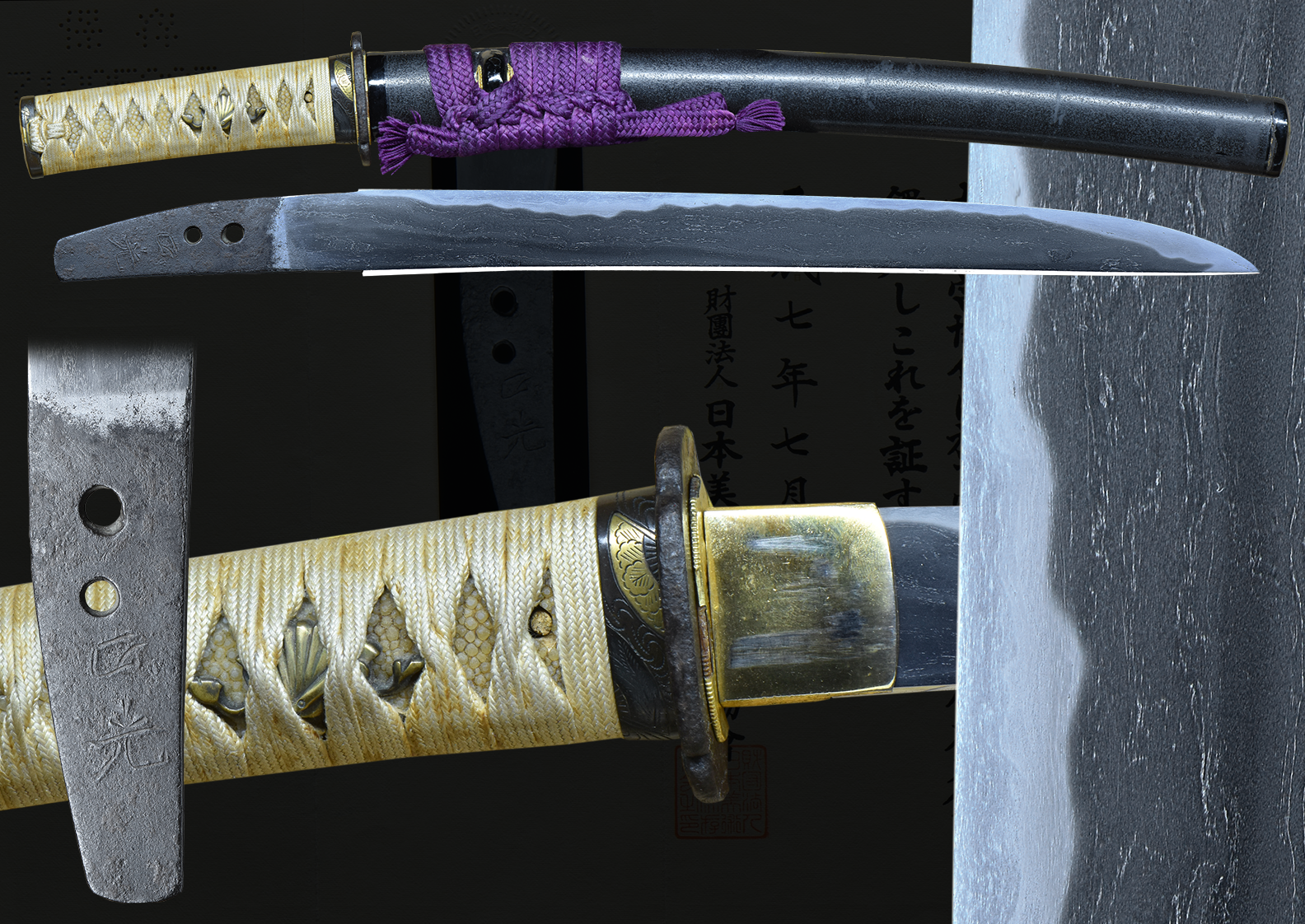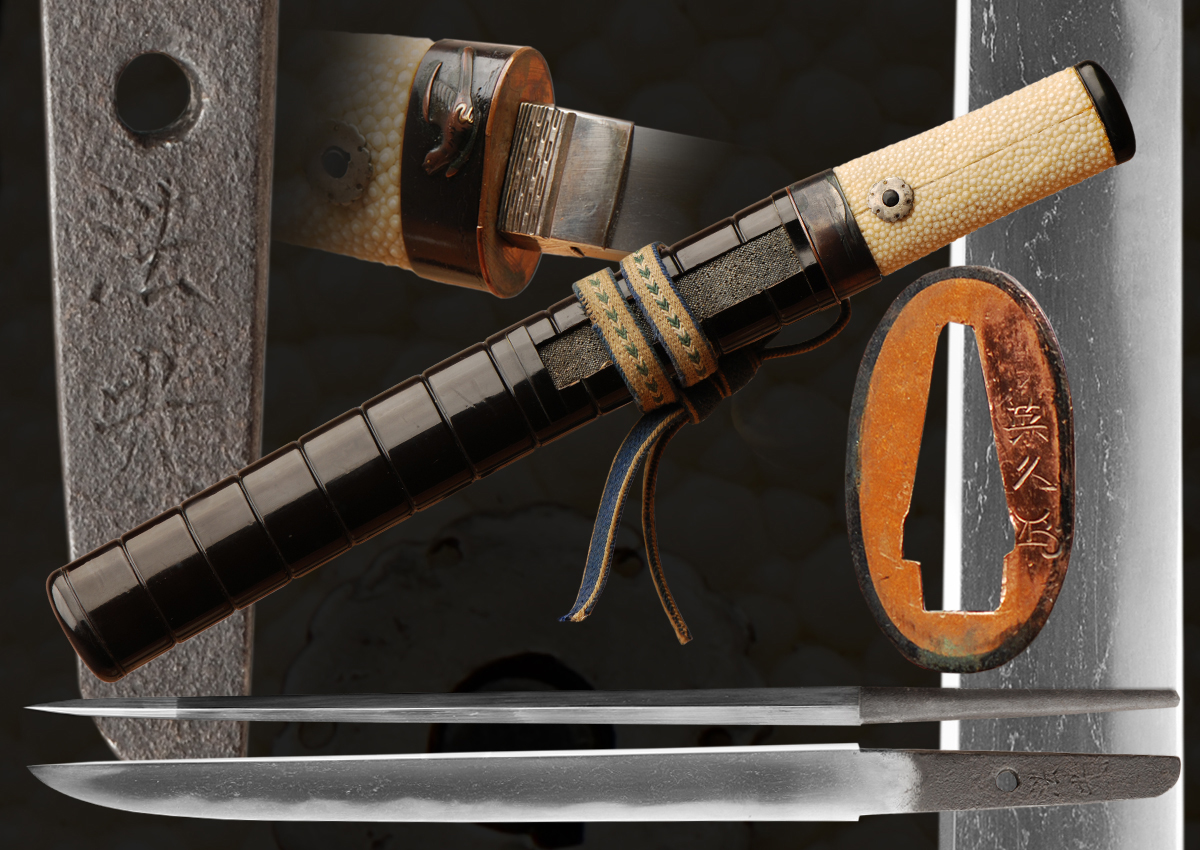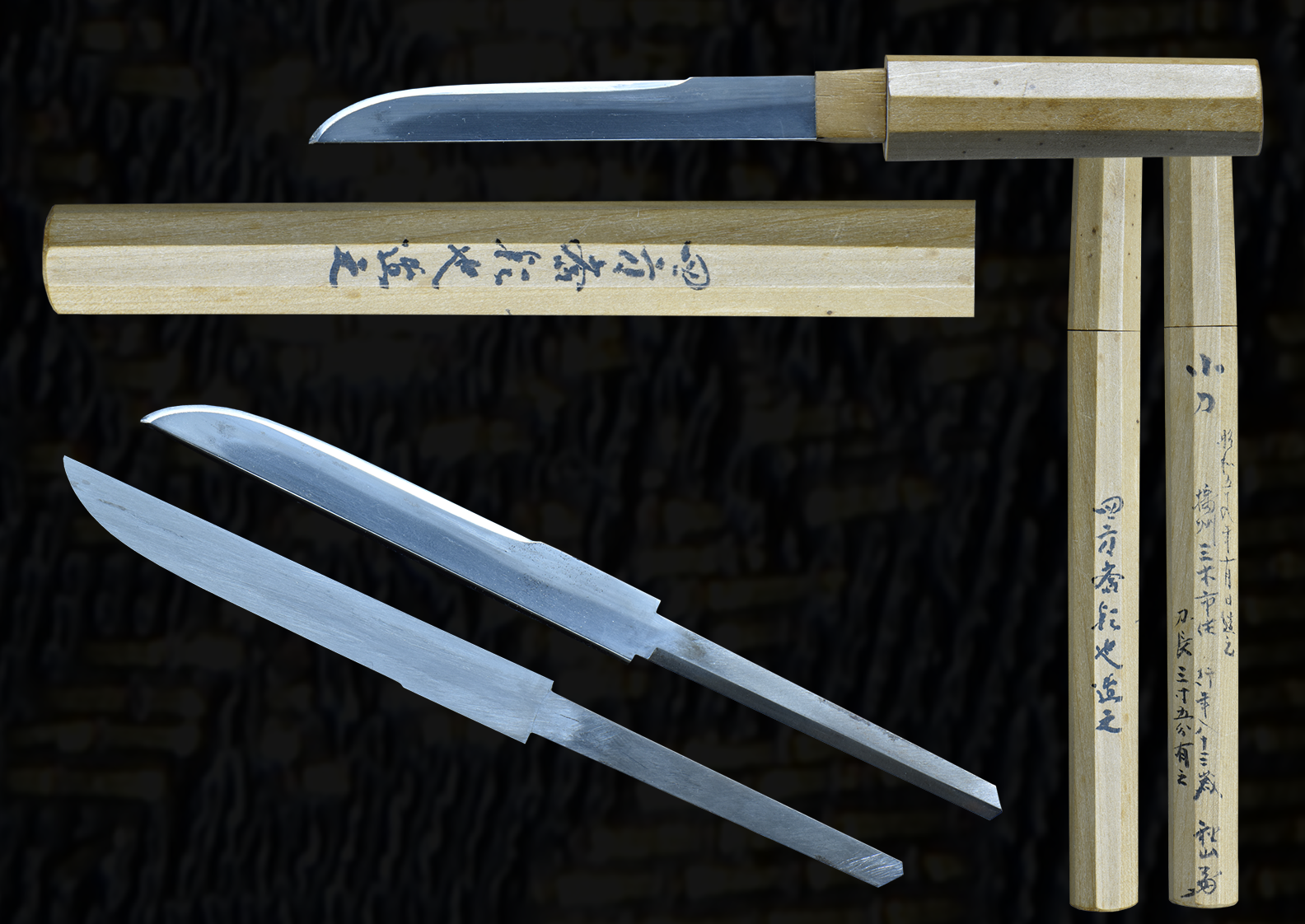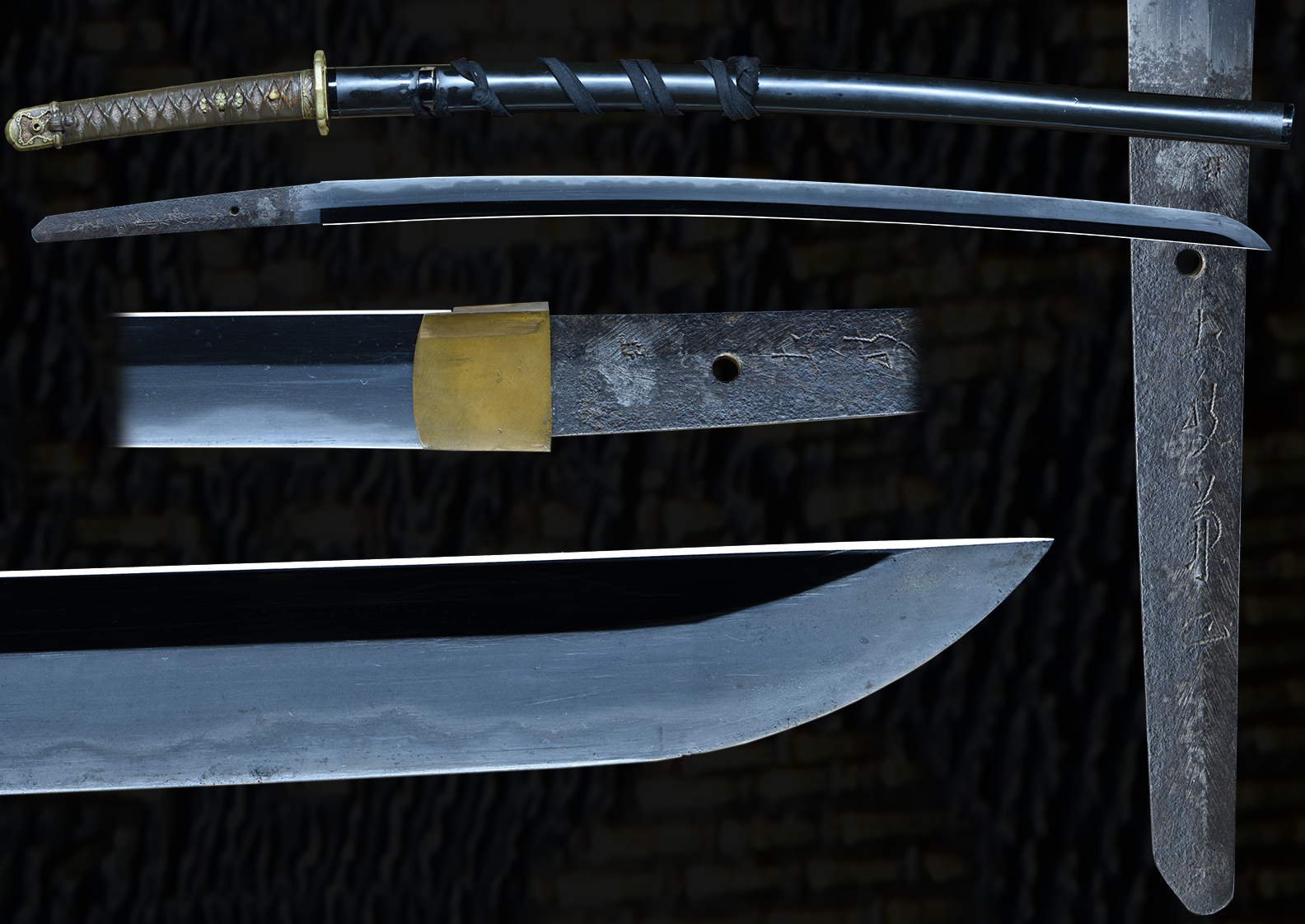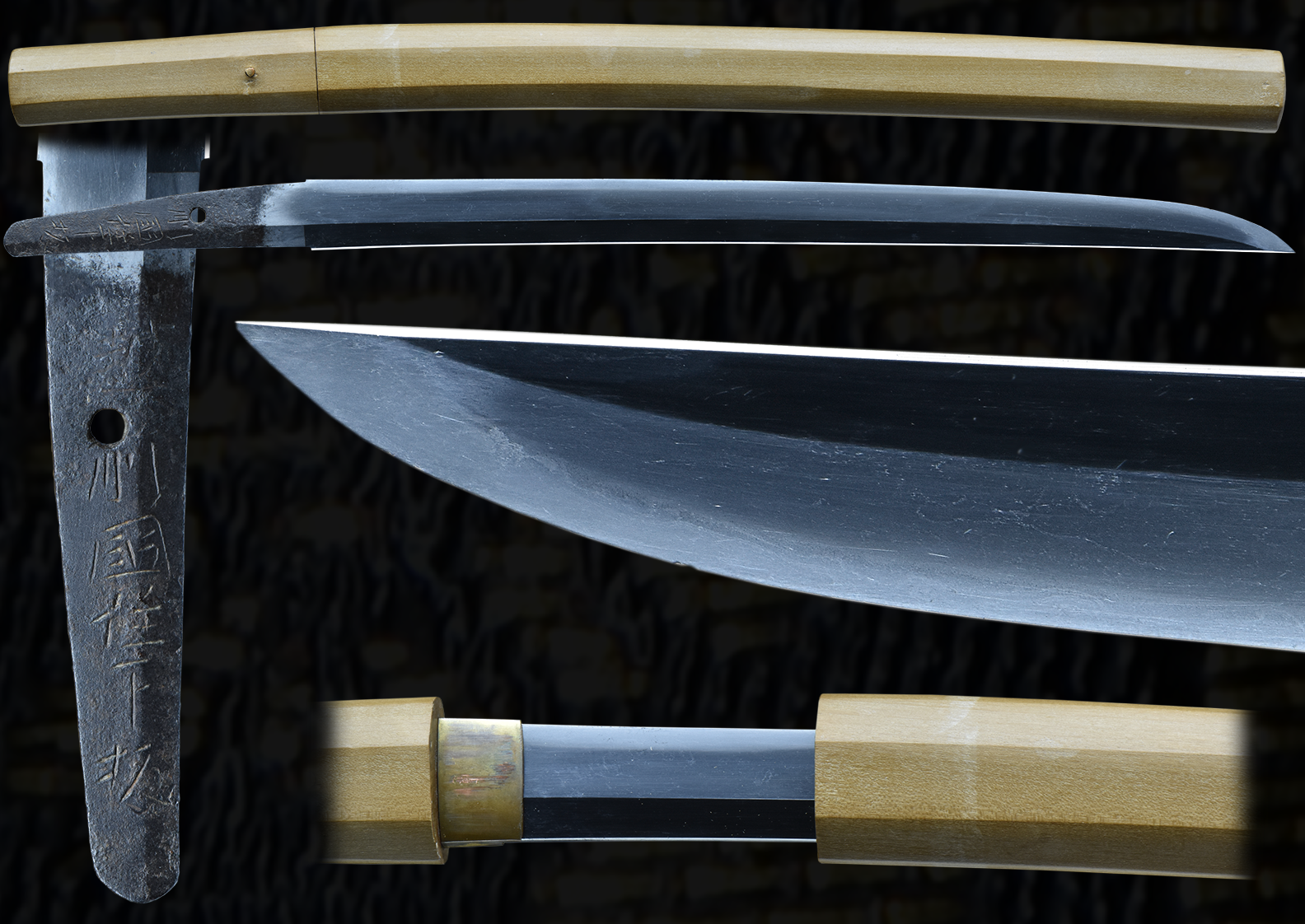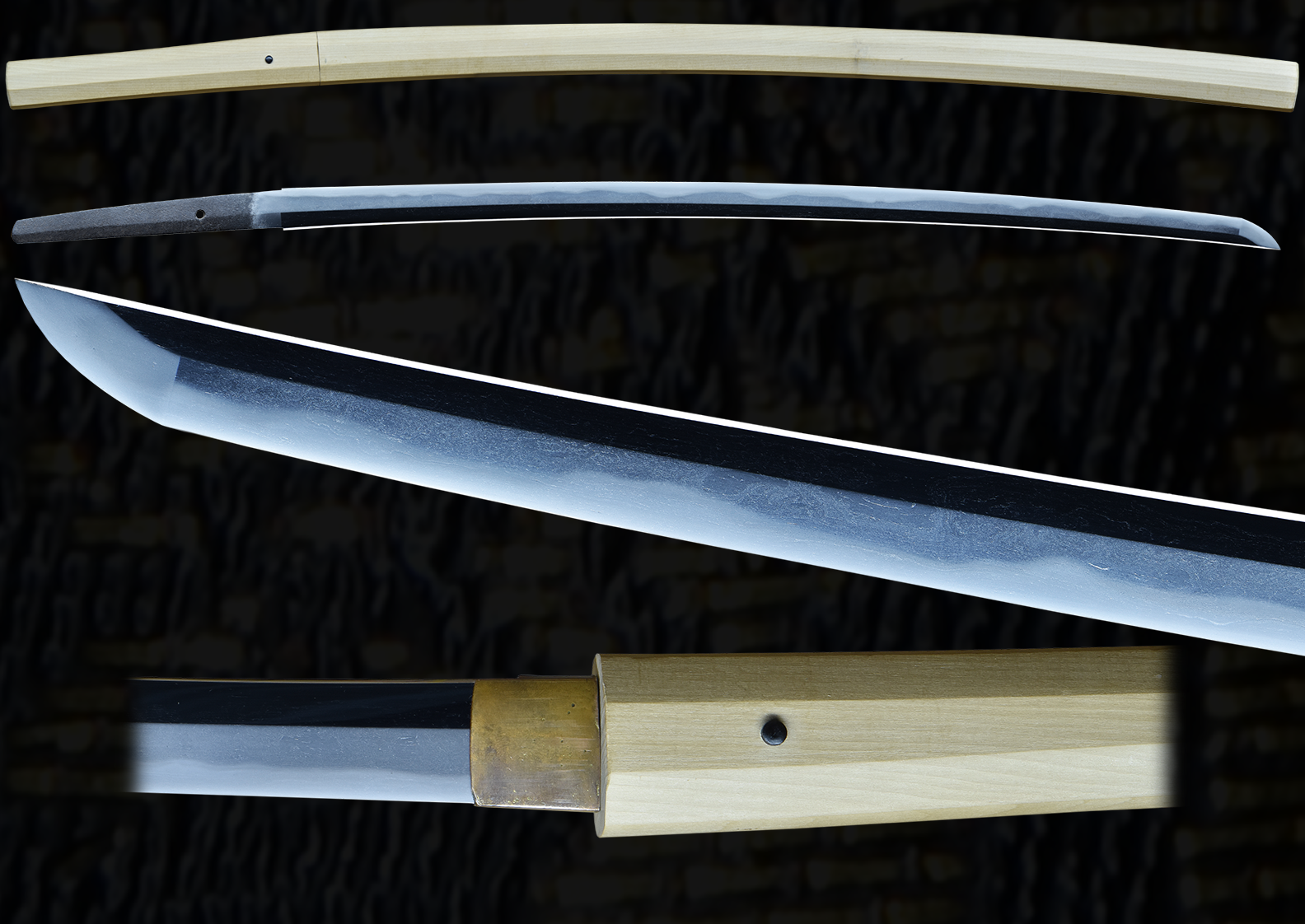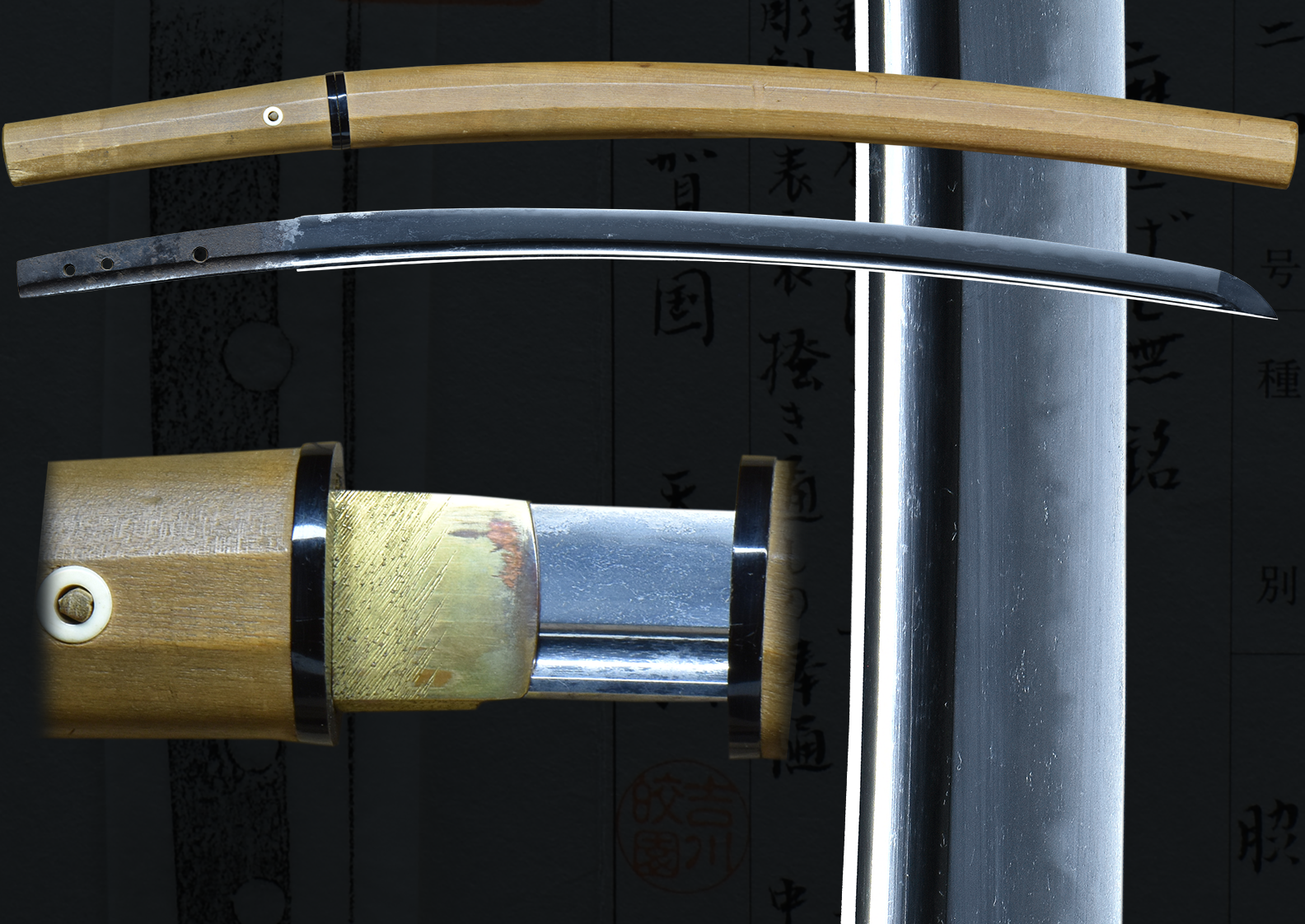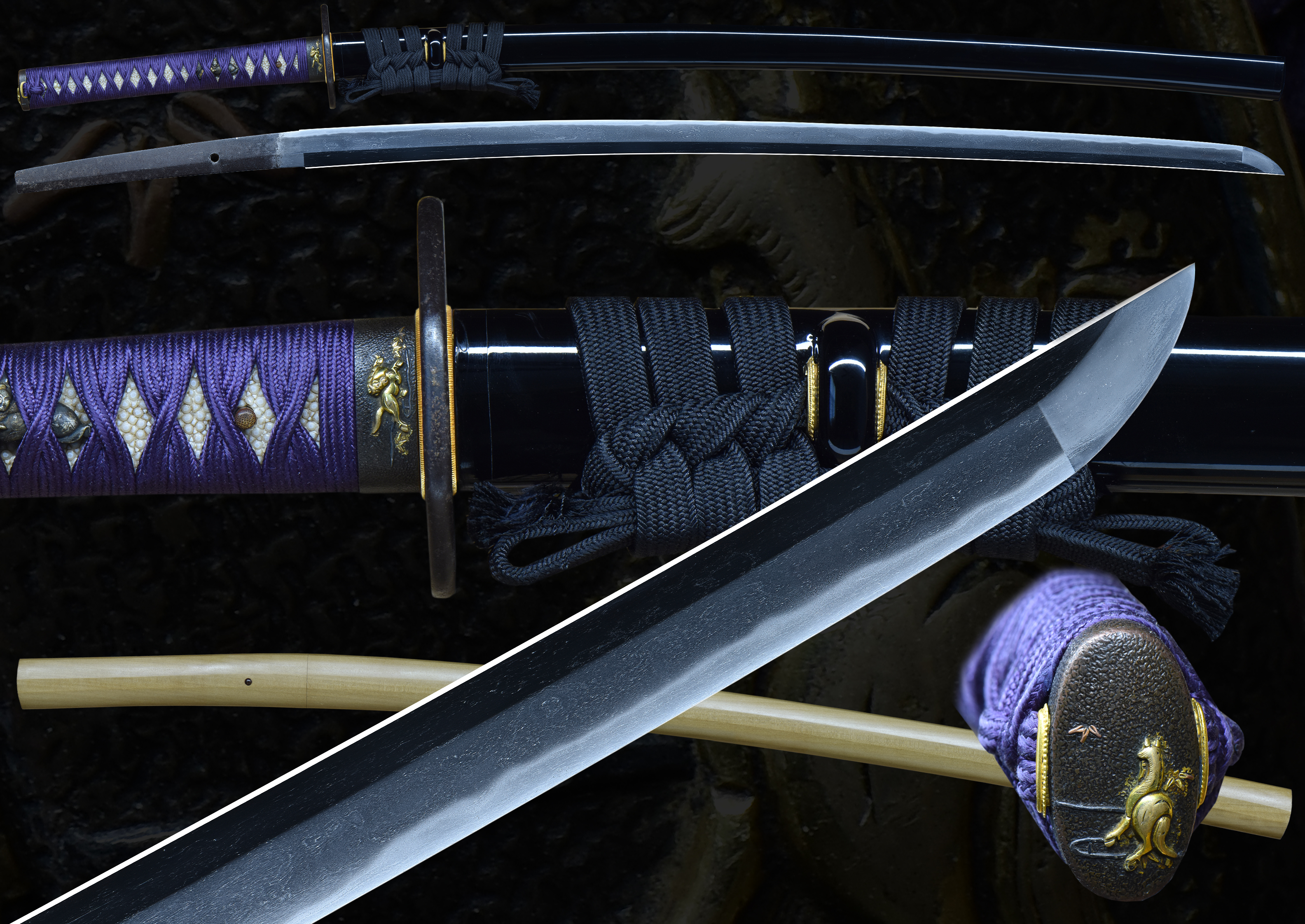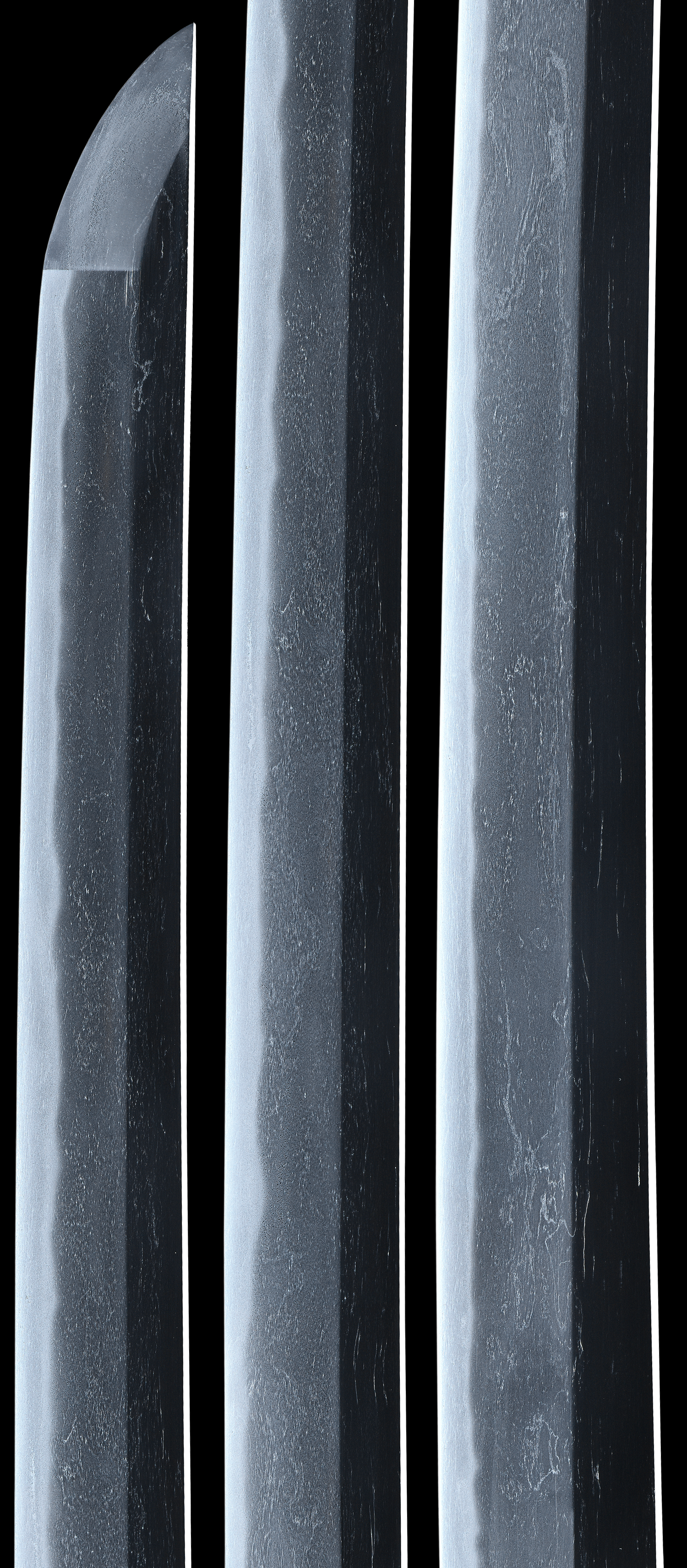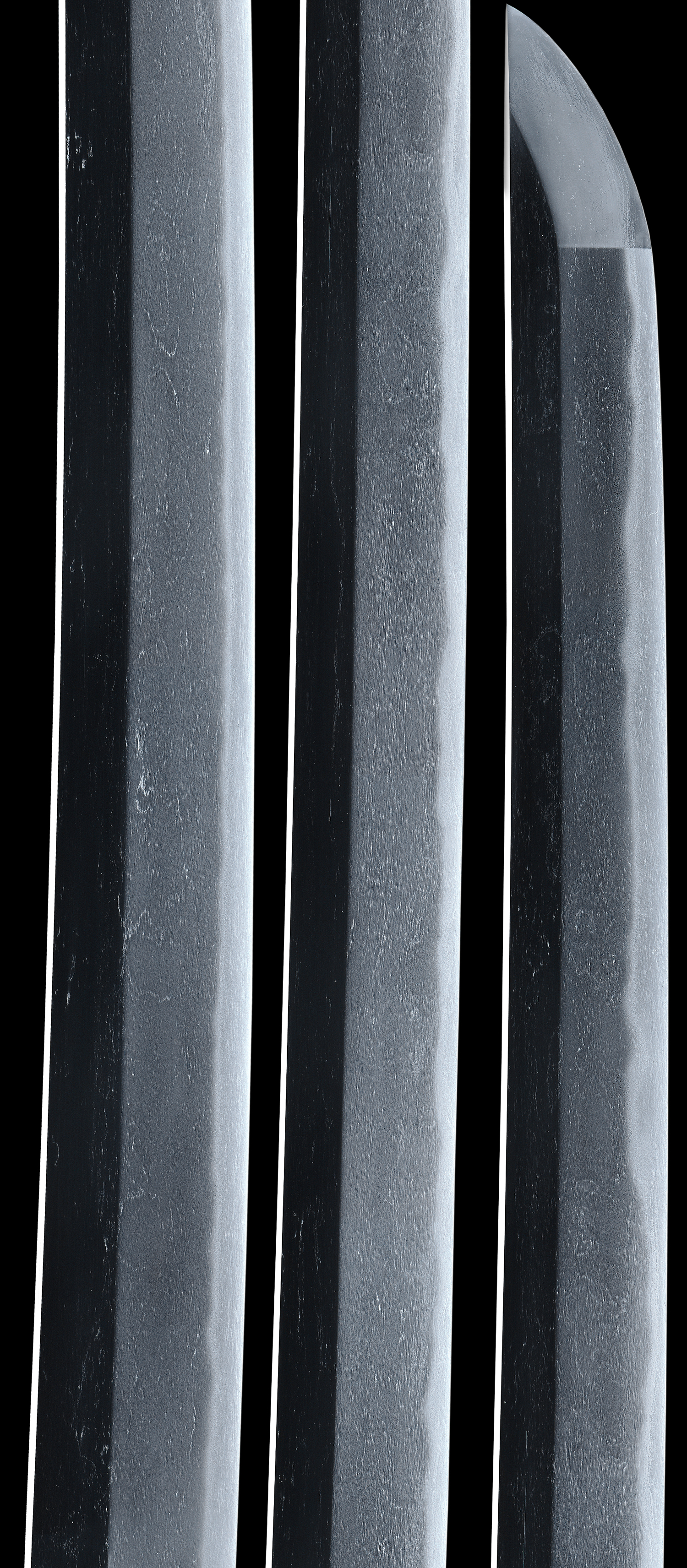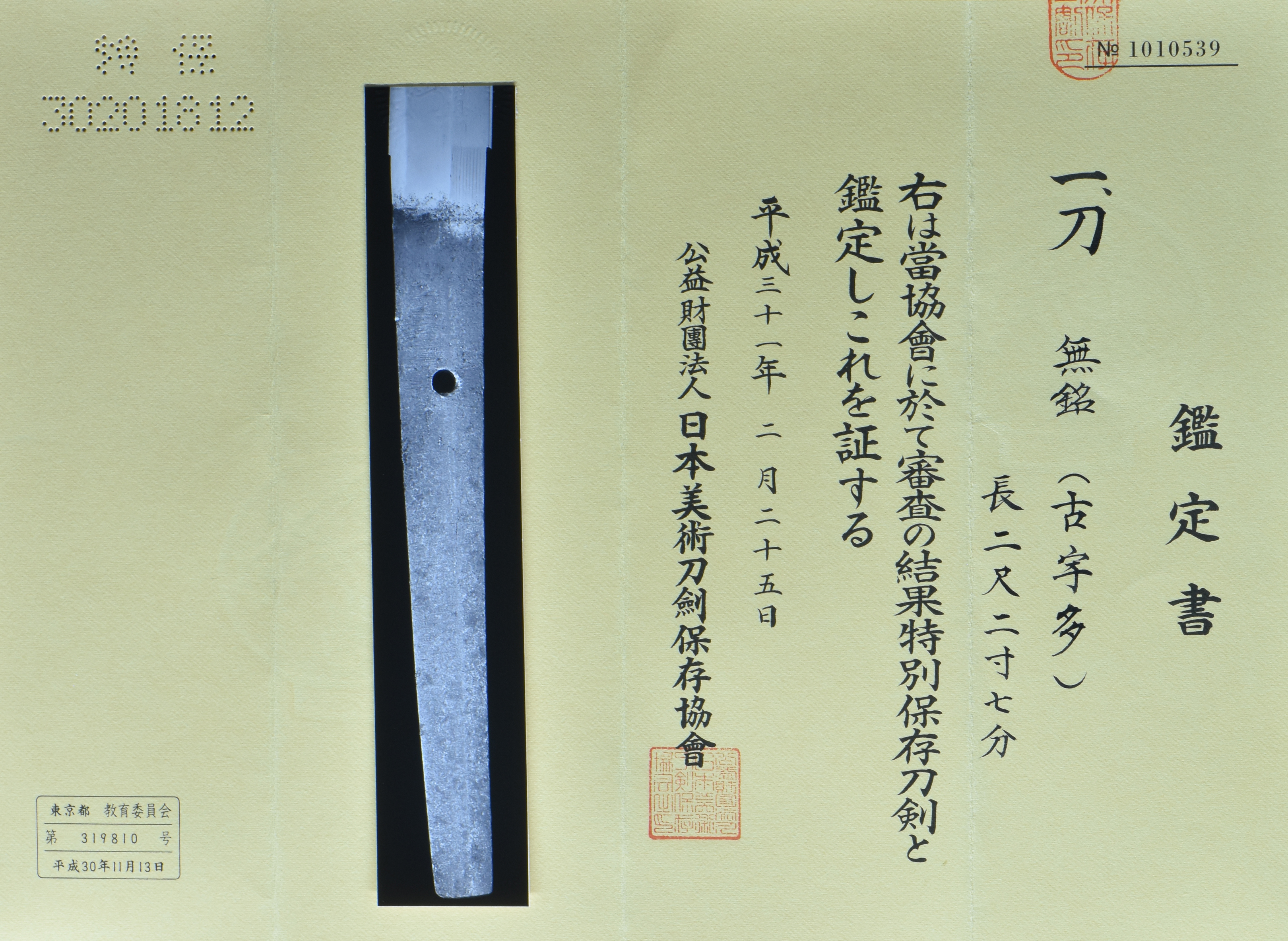This sword in particular has a beautiful sugu-ha midare hamon peppered in nie with a boshi finished in hakikake. The hada is a finely worked itame and mokume covered in ji-nie. The blade is O-suriage with one hole.
The koshirae is elegant and fully restored also. The Fuchi Kashira and Tsuba are all horse themed and menuki of a person in shakudo and gold. The tsuka ito is a spectacular purple in color with black Sageo on a black lacquered saya. There is a fluted tsuba lobed and the seppa and shitodome are gilded in gold to finish this attractive package for this wonderful school of smiths.
The Ko-Uda school:
The beginnings of the Ko-Uda school was with Nyudo kunimitsu and also his many students like Kunifusa, Kunimune and Kunitsaugu.
Generally the old Ko-Uda school made a suguha hamon with soshu den finishes.
This sword is suguha midare with but soshu den influence can be seen with the added kinsuji work and profuse Chikei.
Ko-Uda has been a thriving school from the Kamakura period to the Nanbokucho period (1185-1391)
and has continued to be felt during the early Muromachi period. The Uda school moved from Yamato province, Uda to Ecchu province.
Nyudo Kunimitsu was the founder of the Uda schoool.
The founder of the Uda School is considered to have been Kunimitsu . He was originally from the Uda district of Yamato Province. He worked around the Bunpo Era or 1317 at the end of the Kamakura Era. All of the succeeding smiths of this school used the kanji character “Kuni” in their signatures. At some point he moved to Etchu Province so even though the Uda School had its foundation in the Yamato tradition, it is considered to be one of the wakimono schools from this region together with such schools as the Fujishima and Chiyozuru . Together these three schools are often referred to as the kita kuni mono.
Since remaining works by Kunimitsu are non-existent, his students, Kunifusa and Kunimune , are generally thought to be the true founders of this school. Both of these smiths studied under Norishige (則重) of the Etchu Province and they were active around the Koan Era (1361). The works of these early Uda smiths followed the style of the Yamato Den particularly in the areas of sugata and hamon.
The Uda smiths who were active prior to the Oei Era (1394) were few, while those active after that era were more numerous. Generally the quality of the workmanship of the Uda smiths of the Muromachi Era is inferior to that of Kunimitsu and Shodai Kunimune . While the jitetsu of the early Uda smiths is refined, well folded and beautiful, the works of the later Uda smiths tends to be more likely to have signs of a few impurities. The nie is a bit coarse and the hikari is particularly strong. The nie grains tend to be separated and to twinkle like stars. This is an important kantei point when looking at Uda blades. Also, there are places in the yakiba where the nie is vigorous and places where there is only nioi.
- Mei: Mumei
- Date: Koto (late 1200’s-1300’s)
- Nagasa: 27-1/8 inches
- Sori: 182.0 mm
- Width at the ha-machi: 27.4 mm
- Width at the yokote: 19.4 mm
- Thickness at the mune-machi: 6.8 mm
- Construction: Shinogi zukuri
- Mune: Iori
- Nakago: Ubu
- Kitae: Itame/mokume
- Hamon: Midare Suguba
- Boshi: Maru
- Condition: Good polish
(shipping and insurance included)
Email us if your interested in this item and remember to include the order number for this item: fss-877.
Click to Enlarge Image
Click to Enlarge Image
Tokubetsu-Hozon Tōken
KANTEI-SHO (鑑定書) ‒ APPRAISAL
Katana, unsigned: Ko-Uda (古宇多)
No 1010539
nagasa ~ 68.8 cm
According to the result of the shinsa committee of our society, we judge this work as authentic and rank it as Tokubetsu-Hozon Tōken.
February 25, 2019
[Foundation] Nihon Bijutsu Tōken Hozon Kyōkai, NBTHK (日本美術刀劍保存協會)
For Sale
